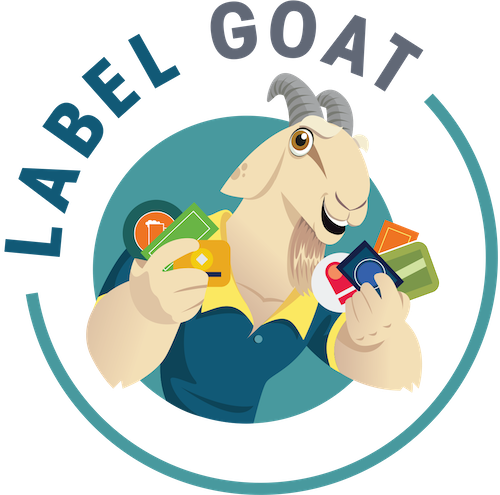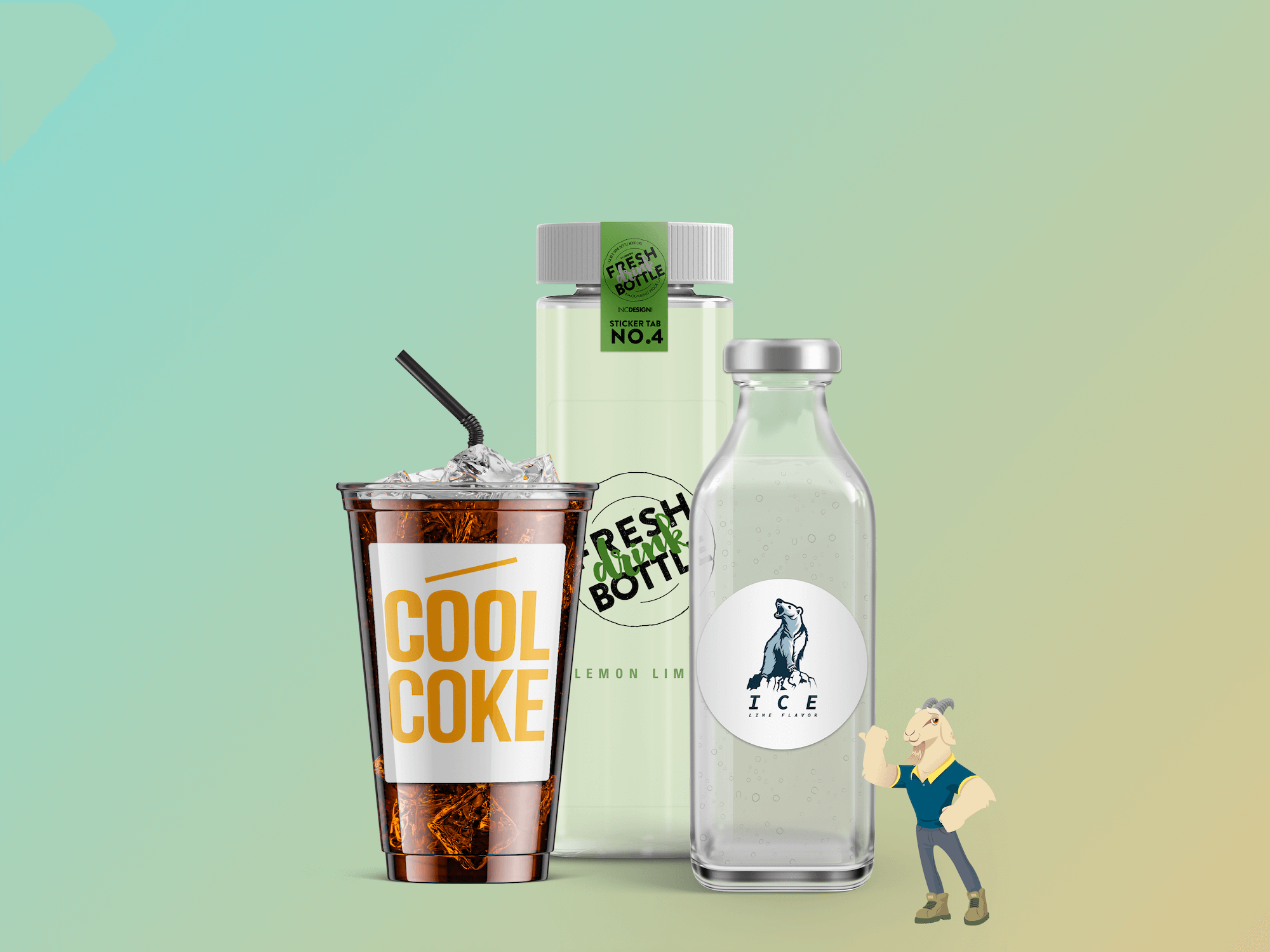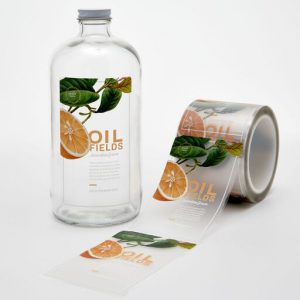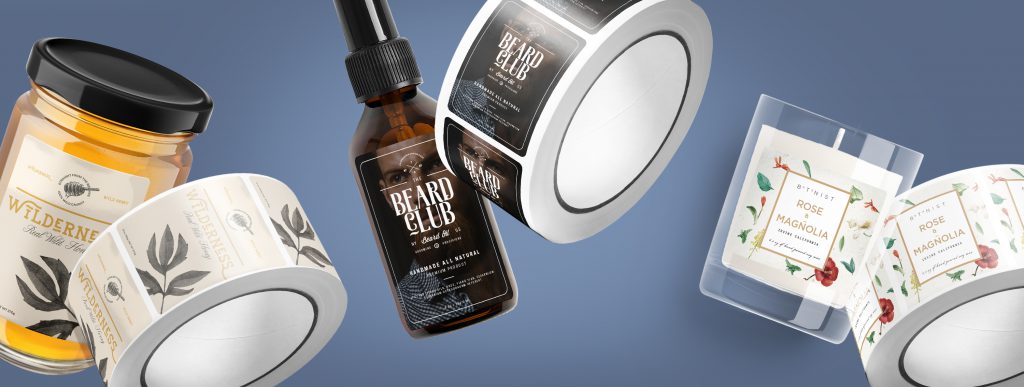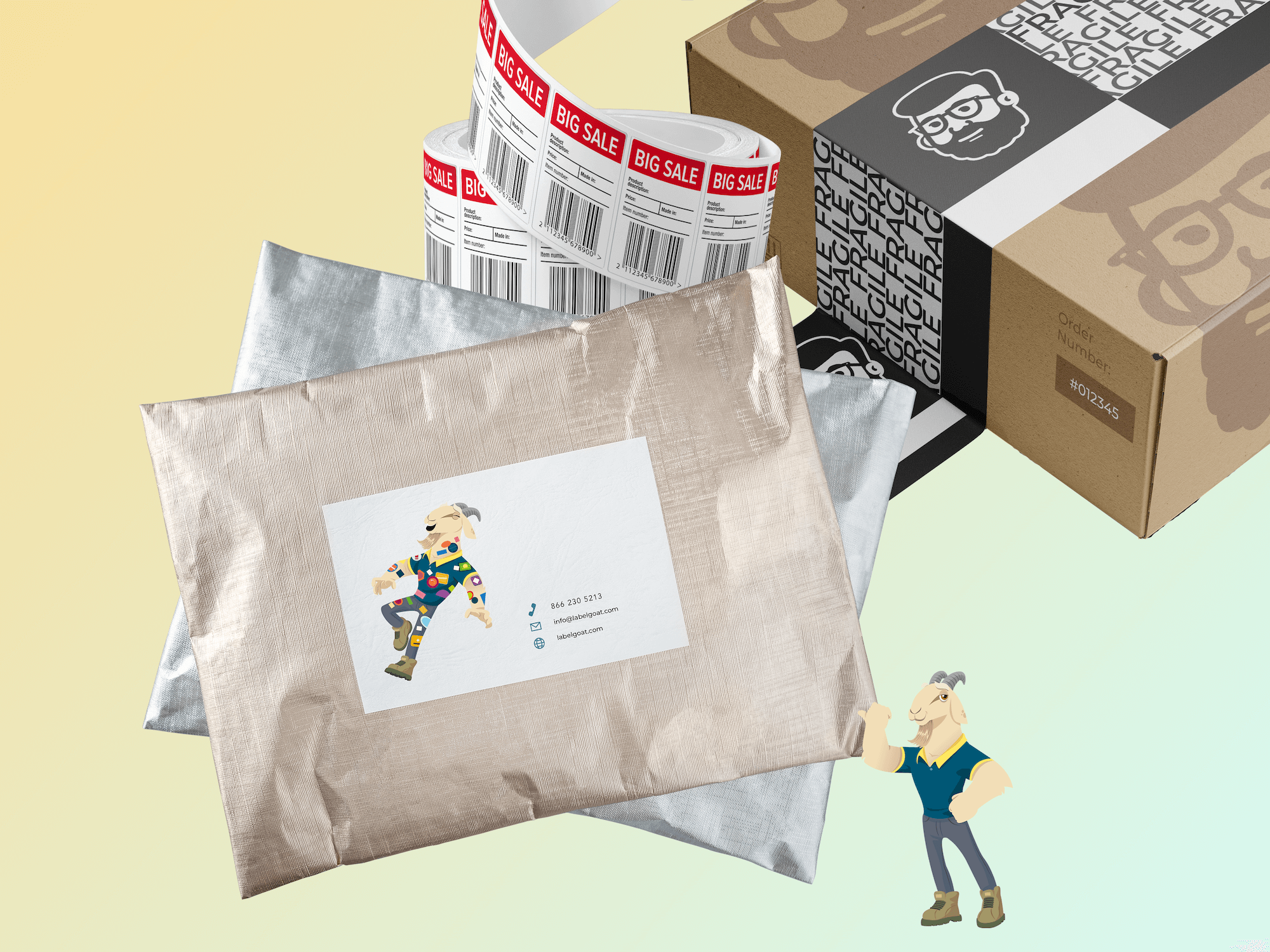Bottle Labels
One-stop solution for all your bottle label needs. We help you craft informative, personalized, and eye-catching labels to make it easy for you to stand out amongst your competitors.
$1.00
Paper Types
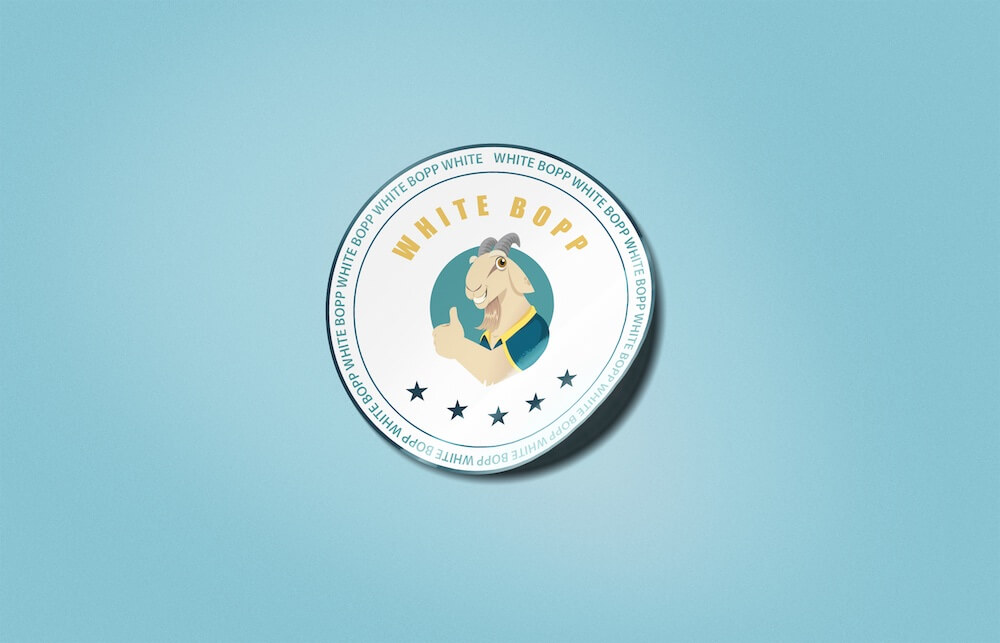
Permanent / Removable BOPP
White BOPP (polypropylene)
- Water, oil, scratch, and tear-resistant
- Endless acrylic water-based adhesive
- Long-lasting
White BOPP Removable
- Water, oil, scratch, and tear-resistant
- Non-permanent acrylic water-based adhesive
- Long-lasting
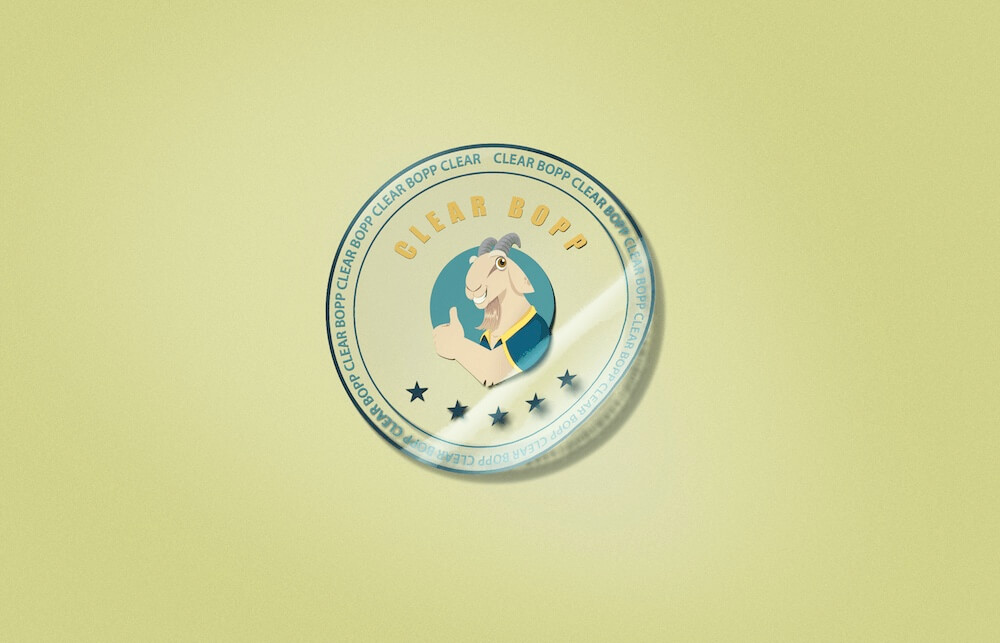
Clear BOPP
- Water, oil, scratch, and tear-resistant
- Permanent acrylic water-based adhesive
- Long-lasting
- NO WHITE INK
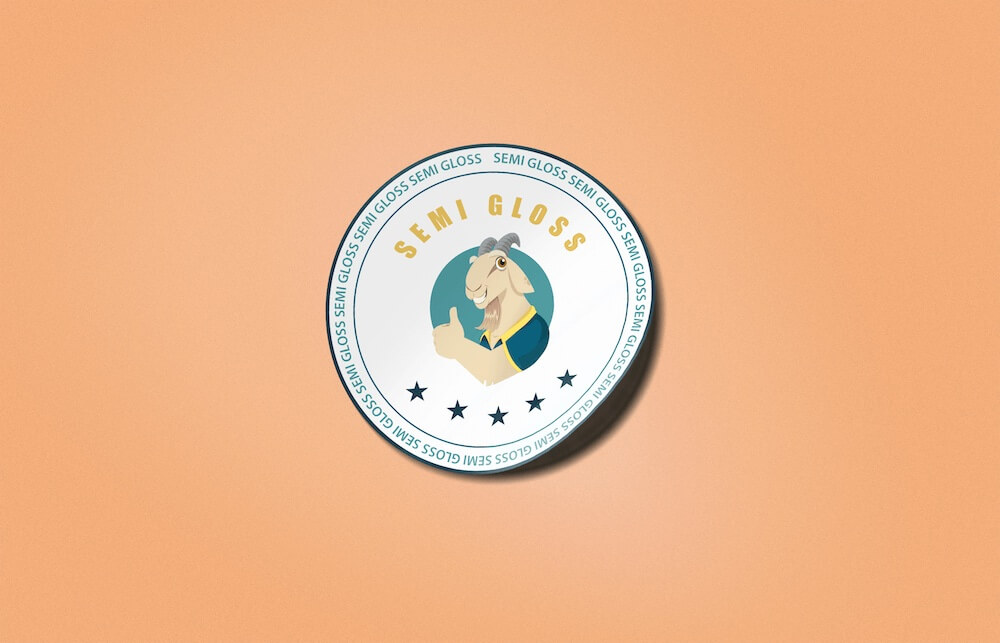
White Paper
- Cost-effective
- Best for indoor use
- It can be written on
- Best used for products that do not come in contact with oil, water, or moisture
Bottle Labels Overview
Bottle labels serve as essential communication tools, concisely conveying crucial information to consumers. They provide product details like brand names, ingredients, nutritional facts, cautions, and manufacturing information, ensuring transparency and compliance with regulatory requirements. Often made from paper or synthetic materials, labels are printed with vibrant colors, captivating designs, and readable text to grab the potential customer’s attention. They are typically affixed to bottles using adhesive, ensuring durability and longevity. The labels may incorporate barcodes for inventory management and tracking purposes. Ultimately, bottle labels play a significant role in brand recognition, product differentiation, and consumer safety by communicating vital information to potential buyers.
Different Types of Bottle Labels
Several bottle labels are available. Each offers unique features and is suitable for different purposes. Permanent labels, made from BOPP (Biaxially Oriented Polypropylene), are durable and resistant to water, oil, scratches, and tears. They use a permanent adhesive, ensuring long-term use. Removable labels, conversely, use non-permanent adhesive and are ideal for temporary applications. Clear BOPP labels are recommended for glass bottles and similar transparent products, as they provide a “no label” look, giving your brand an elegant and minimalist appearance. A simple traditional white paper label is cost-effective for those on a budget. With various materials, shapes, sizes, and printing methods available, you can choose the perfect label to enhance packaging and effectively promote your brand.
Benefits of Bottle Labels
Bottle labels offer numerous benefits for manufacturers and consumers. They provide vital information such as product names, ingredients, nutritional facts, and expiry dates, ensuring consumer safety and informed purchasing decisions. Well-designed labels help consumers identify and differentiate your product, fostering brand recognition and setting you apart from competitors. They provide a marketing and advertising platform, giving your product a competitive edge. Additionally, labels ensure safety by displaying essential warnings and precautions, allowing consumers to make informed choices based on their dietary preferences, allergies, and health requirements. So, bottle labels are crucial in instilling trust and subtly promoting your product.
Shelf Appeal
Bottle labels enhance shelf appeal by capturing attention with attractive designs and colors. Well-designed labels help products stand out, establish brand identity, provide product information, differentiate from competitors, and convey a sense of value. By leveraging effective label design, manufacturers can influence customers and make products stand out on store shelves.
Brand Storytelling
Bottle labels visually represent a brand’s identity and values, contributing to brand storytelling amongst the consumers in the market. They incorporate logos, colors, and design to establish brand recognition and recall. Labels can convey a brand’s story, heritage, and unique selling points, evoking emotions and creating a narrative that resonates with consumers.
Cross-promotion
Cross-promotion on bottle labels involves mutual marketing support, leading to shared resources and cost efficiencies. Bottle labels benefit cross-promotion efforts by increasing brand visibility and reaching a wider audience. They create associations between the primary product and the partner brand, enhancing brand perceptions. It stimulates sales, encourages customers to try new products, and fosters loyalty.
Regulatory Compliance
Bottle labels aid regulatory compliance by providing essential product information, safety instructions, and hazard warnings. They ensure transparency, enabling consumers to make informed decisions. Further, anti-counterfeiting measures like holograms and tamper-evident seals protect against fake products. Meeting these standards enhances consumer trust and avoids legal penalties for the food, pharmaceutical, and chemical industries.
Barcode and Tracking
Bottle labels mandatorily include barcodes allowing easy product tracking. The labels with barcodes enable efficient inventory management, streamline logistics operations, enhance traceability throughout the product life cycle, ensure accurate product identification, and improve supply chain visibility. These labels provide seamless tracking, reliable product information, and improved inventory management and logistics efficiency.
Frequently Asked Questions
Are bottle labels waterproof and durable?
Yes, bottle labels can be waterproof and durable. Generally, labels made using vinyl, polyester, or polypropylene are moisture-resistant. We offer Permanent/Removable BOPP and Clear BOPP label options that are water, chemicals, and abrasion resistant. We also provide additional treatments like clear laminate or varnish to enhance their longevity and provide extra protection against external elements. While these labels can withstand exposure to water and general wear and tear, it is recommended not to expose them to extreme conditions for a long time as they may not be completely water resistant. With prolonged exposure to extreme conditions, it is normal for any label to deteriorate, lose adhesion, or become unreadable.
What label sizes and shapes are available for bottles?
To meet the diverse packaging requirements, bottle labels come in various shapes and sizes. We currently offer labels in circle, oval, rectangle, and square shapes. Depending upon the shape of the bottle, label sizes can vary. For instance, round bottles may have standard diameters like 1.5″, 2″, or 2.5″, while square or rectangular bottles could feature sizes such as 2″ x 3″, 3″ x 4″, or 4″ x 6″. Understanding and considering these factors is crucial before picking a label size. We also provide a customization option to allow your business to create labels tailored precisely to your bottle dimensions.
Are the adhesive used on bottle labels safe for food and beverage labels?
Yes, adhesives used on bottle labels are safe for food and beverage labels. In the packaging industry, the safety of adhesives is of utmost importance, especially for products that come into direct contact with food and beverages. Manufacturers adhere to strict regulatory standards and formulate adhesives specifically for food and beverage labeling. We strictly follow guidelines and regulations provided by regulatory bodies like the FDA and EFSA to ensure the safety of materials used in food packaging. We also collaborate with suppliers to ensure the adhesives used on our labels are food-safe and compliant with these regulations.
Can bottle labels withstand temperature variations (hot or cold)?
Bottle labels are generally designed to endure temperature variations, including hot and cold conditions, with their resistance depending on the materials used and adhesive properties. Vinyl, polyester, and polypropylene are commonly used label materials known for their ability to withstand temperature fluctuations. These materials can generally endure a wide range of temperatures without significant damage. The adhesive used on the labels is also crucial, as high-quality adhesives are formulated to maintain bonding strength and adhesive properties across different temperature ranges. However, extreme conditions like low freezing or high heat may impact label performance. We help you select the appropriate labels depending on your temperature resistance requirements.
